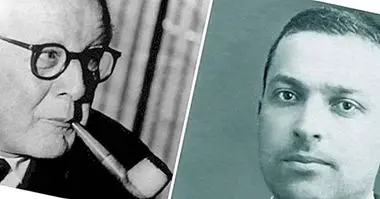The 12 learning styles: what is each one based on?
Learning styles are the consistent way in which students respond to or use stimuli in the learning environment, that is, the educational conditions under which a student is most likely to learn .
Therefore, learning styles do not really refer to what students learn, but how they prefer to learn and, in many cases, how they find it easier to learn. Learning styles are a mixture of characteristic cognitive, affective and physiological factors that serve as relatively stable indicators of how the student perceives, interacts and responds to the learning environment.
- It may interest you: "The 13 types of learning: what are they?"
Learning styles: what are they?
There are people who find it easier to learn by observing, because colors or photographs help them to learn more easily; while others learn better by reading and this is their way of studying. Have you ever considered what style of learning is most effective for you? The truth is that there is no single way of learning, but rather each one of us usually feels more comfortable with a learning style or another .
In today's article, we review the different learning styles. Do not miss them!
The learning styles according to Alonso, Gallego and Honey
For Alonso, Gallego and Honey (1995), authors of the book Learning styles of learning and improvement procedures, "it is necessary to know more about learning styles and which of these defines our favorite way of learning.
This is essential, both for the apprentices and for the teachers. " The authors state that there are 4 learning styles:
1. Assets
Students who prefer the active learning style they enjoy new experiences, they are not skeptical and they have an open mind . They do not mind learning a new task, because they do not avoid challenges, even though that may compromise their idea of themselves and their abilities.
2. Reflective
Individuals with a preference for reflective learning style observe experiences from different angles . They also analyze data, but not before having reflected with determination. They are prudent and do not rush to draw conclusions from their experiences, so they may seem hesitant.
3. Theorists
They usually have a perfectionist personality. They are also analytical, but they like to synthesize and seek to integrate the facts into coherent theories, without leaving loose ends and unanswered questions. They are rational and seek to remain objective first and foremost.
4. Pragmatics
They are rather practical and need to check their ideas . They are realistic when making decisions and solving an issue, and direct their learning towards the need to give answers to specific problems. For them, "if it is useful, it is valid".
Other learning styles we can find
But the previous classification is not the only one that exists, other authors have proposed different learning styles. They are the following:
5. Logical (mathematical)
Individuals with the logical learning style prefer to use logic and reasoning instead of contextualizing. They use schemes in which the relevant things are shown. They associate words without finding meaning.
6. Social (interpersonal)
This style of learning, also called group, is characteristic of those people who prefer to work with others whenever they can . These individuals try to share your conclusions with others. and they put their conclusions into practice in group settings. The "role play" is an ideal technique for them.
7. Solitary (intrapersonal)
This style of learning, also called individual, is characteristic of those who prefer solitude and tranquility to study . They are reflective people and usually focus on topics that are of interest to them and give much value to introspection to "mental experiments", although they can also experiment with the subject.
8. Visual learning
These students they are not good at reading texts but, on the other hand, they assimilate the images very well , diagrams, graphics and videos. It is usually practical for them to use symbols or to create a visual shorthand when taking notes, since in that way they memorize better.
9. Aural (auditory)
These students learn best when they listen . For example, in discussions, debates or simply with the explanations of the teacher. While other students can learn more by coming home and opening the class manual, they learn a lot in the classroom, listening to teachers.
10. Verbal (reading and writing)
Also known as linguistic learning, students with this learning style they study better by reading or writing . For them, it is better to read the notes or simply elaborate them. The process of making these notes is a good tool for their learning.
11. Kinesthetic
These people learn best with practice, that is, doing more than reading or observing . It is in this practice that they carry out the analysis and reflection. Teachers who want to get the most out of these students must involve them in the practical application of the concepts they intend to teach.
12. Multimodal
Some individuals combine several of the previous styles , so they do not have a certain preference. His learning style is flexible and he is comfortable learning with various learning styles.
Understanding the styles of learning: what does science say?
Learning styles have more influence when it comes to learning than we realize, because they represent the internal experiences we have or the way we remember information.
Researchers have been interested in this phenomenon, and it is estimated that each learning style uses different parts of the brain . Here are some examples:
- Visual : The occipital lobes in the back of the brain control the visual sense. Both the occipital and parietal lobes handle the spatial orientation.
- Aural : Temporal lobes handle auditory content. The right temporal lobe is especially important for music.
- Verbal : In this learning style, the temporal and frontal lobes intervene, especially two specialized areas called Broca and Wernicke areas.
- Kinesthetic : The cerebellum and the motor cortex in the back of the frontal lobe, handle much of our physical movement.
- Logical : The parietal lobes, especially the left side, drive our logical thinking.
- Social : The frontal and temporal lobes handle a large part of our social activities. The limbic system also influences social as well as individual style. The limbic system has a lot to do with emotions and moods.
- Individual : The frontal and parietal lobes, and the limbic system, also intervene with this learning style.
An approach to the theory of multiple intelligences
Taking into account what has been explained in the previous paragraphs, a theory that revolutionized the concept of intelligence makes a lot of sense. This theoretical idea was born when Howard Gardner warned that the one indicated by the Intellectual Quotient (IQ) it is not the only form of intelligence that exists , and identified and described up to eight different types of intelligence. According to this conception of the human mind, there are several types of mental capacities that, in one way or another, are relatively independent of each other and can be considered self-sufficient types of intelligence.
Thus, the learning styles could indicate the different ways in which people learn depending on the type of propensities of facilities they have, taking into account those intelligences in which they emphasize more and less.
- To learn more about this theory, you can visit our article: "Gardner's Theory of Multiple Intelligences"



















